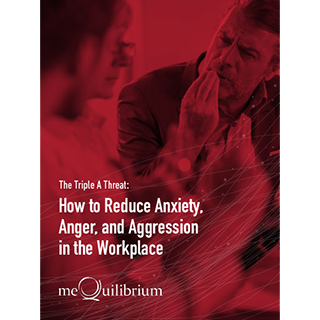Article originally appeared on HCI.org
The key to enabling innovation and high performance in teams is not finding the perfect mix of personalities and capabilities or implementing the ultimate process. It requires a foundation of psychological safety: The belief, shared by team members, that they are safe to take risks, make mistakes, and express themselves openly without jeopardizing their feelings, jobs, reputations, or positions. It also doesn’t cost a thing.
Research shows that team members who are free to experiment, make mistakes, share creative ideas and different opinions without fear of ridicule or punishment are more motivated and engaged. They are more likely to take the kinds of calculated risks that lead to advances and breakthroughs.
Psychological safety also fosters a sense of belonging among team members—a fundamental human need that contributes to greater empathy, cooperation, and accountability. Those qualities, in turn, build even more trust.
Unfortunately, much of the common bad behavior we see inside organizations threatens the psychological safety of teams. Things like blame and criticism, disregard for new ideas, penalizing for mistakes, a lack of empathy, and competition.
Team members who feel psychologically unsafe are insecure and disengaged. Additionally, rather than speaking up with new ideas or insights, they tend toward groupthink: A psychological phenomenon where well-intentioned people, spurred by the urge to conform, make irrational or non-optimal decisions. This hurts the entire team and limits progress and innovation.
Creating a Culture of Safety
To get the best from a team and create a smart tribe of engaged people, managers and leaders need to build a sense of shared trust and respect so that every team member feels comfortable participating and expressing themselves. Here’s how:
1. Model Trust
Research shows that when a manager shares their vulnerabilities, mistakes, and self-doubts, they form the foundation of creating psychological safety—enhancing team trust and improving engagement. Team members are more likely to participate in trust-building behaviors when a manager demonstrates them first. In fact, a Gallup poll found that only two percent of employees who think of their managers as unapproachable are engaged at work and a whopping 65 percent are actively disengaged.
Think of it this way: Everyone wants to feel valued, respected, and like they belong. Modeling this important behavior also sends a message of acceptance to the team and helps everyone remember that we are more alike than different.
Try this: Share a past mistake and what you learned from it. Share a current work challenge and ask for input. Throw out a wild idea to free your team up to voice riskier, more creative or out-there ideas. Share a time where you had to learn on the job—when you had to do something new for the first time.
2. Manage Conflict
Respectfully handling issues and differences is the second key component of creating a psychologically safe culture. As we all know, when in confrontational situations people react emotionally, sometimes very strongly, with silence, tears, anger, laughter even. There are specific ways to handle these situations that will build a safe culture and reinforce trust.
Try this: For example, when someone on the team is silent don’t mistake it for dismissiveness. They may be listening, but they may not know what to say, are afraid to say anything that may provoke disciple, or are overwhelmed and shutting down. Assure them that you’re there to help, not punish. Ask open-ended questions to encourage dialogue (ie, “Tell me what happened today.”). And carefully word comments to encourage openness.
Step 3: Enable Collaboration
Creating a safe space to enable collaboration is the final step in creating a team that feels psychologically safe. Research shows that when every person feels comfortable contributing, your team will become more collaborative, creative, and productive. This can lead to breakthroughs.
Try this: Encourage people to share more by asking questions. Share observations in a neutral way, rather than a judgemental one. Accept all ideas equally and resist the urge to criticize. Encourage collaboration, not competition. Show understanding by repeating what was said. Do not interrupt each other.
Psychological safety grows with regular, positive interactions and consistent effort. How will you change your leadership style to model empathy, better manager conflict, and enable collaboration?
To learn more watch our recent webinar, Better Together: Optimizing Differences to Build Strong Teams, hosted by HCI and featuring meQuilibrium Chief Science Officer and Co-founder Andrew J. Shatté, Ph.D.

